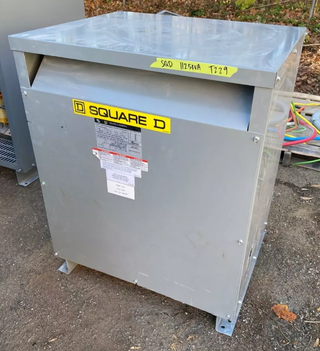Circuit breaker safety isn’t just about flipping a switch—it’s about understanding their function, using them properly, and being aware of potential hazards. These devices play a critical role in preventing electrical fires, shocks, and equipment damage in commercial and industrial environments.
.In this guide, we’ll walk through key circuit breaker safety tips—from basic precautions to proactive maintenance strategies. Whether you’re overseeing a warehouse, office, or manufacturing plant, these tips can help protect your operation and avoid costly disruptions.
What Is a Circuit Breaker and Why It Matters
A circuit breaker is an electrical safety device that interrupts current flow when it exceeds safe levels. This helps protect systems, equipment, and personnel from damage or injury. Unlike fuses, breakers can be reset, making them essential in high-demand environments.
When a circuit is overloaded—due to excessive equipment load, a short circuit, or arc fault—the breaker trips and halts electrical flow. This prevents overheating wires, equipment damage, and fires.
Common Causes of Tripped Breakers
-
Overloaded circuits – Drawing more current than the circuit is rated to handle.
-
Short circuits and ground faults – Faulty wiring or insulation causes current to take unintended paths.
-
Arc faults (AFCI) – Loose wiring or degraded insulation causes arcing. AFCI breakers detect this and trip to prevent fires.
Recommended Products in this Article
Essential Safety Tips for Handling Breakers
-
Turn off the main power before working on any panel to isolate the system.
-
Wear personal protective equipment (PPE) such as insulated gloves, safety goggles, and arc-rated clothing.
-
Keep a safe distance and stand to the side of the panel when operating breakers.
-
Use the correct breaker size to match the load rating and prevent damage or nuisance trips.
-
Avoid wet conditions when working near electrical panels. Water increases shock risk.
-
Label circuits clearly to avoid accidental shutdowns and improve response time during emergencies.
-
Distribute electrical loads properly across circuits to prevent overloads.
-
Install GFCI and AFCI breakers where required, such as in restrooms, kitchens, janitorial areas, or equipment zones.
Explore GFCI and AFCI breakers in our Circuit Breakers collection.
How to Reset a Tripped Breaker Safely
-
Power down or unplug devices on the affected circuit.
-
Locate the breaker in the middle (tripped) position.
-
Flip it to OFF, then back to ON.
-
Reconnect devices one at a time. If it trips again, investigate further.
Never tape down a breaker to keep it on. This creates a major safety risk.
Maintenance Best Practices
Inspect regularly for heat discoloration, buzzing, corrosion, or other warning signs every 6–12 months.
Test GFCI and AFCI breakers monthly using the built-in test button to verify proper function.
Watch for warning signs like flickering lights, warm receptacles, or burnt smells.
Call a licensed commercial electrician for persistent issues, frequent tripping, or suspected damage.
Upgrading for Enhanced Safety
Install GFCI and AFCI breakers in high-risk zones throughout the facility.
Consider smart breakers for load monitoring, remote alerts, and real-time analytics.
Replace old or faulty breakers as they wear out or show signs of malfunction.
Need replacements? Browse our Circuit Breakers collection.
Real-World Scenarios from Commercial Settings
Office overload – Plugging printers, space heaters, and chargers into one outlet caused breaker trips and equipment damage.
Workshop extension cord fire – Overloaded extension cords led to overheating and smoke damage.
Warehouse shock incident – A pressure washer used near an unprotected outlet resulted in a minor shock. A GFCI would have prevented it.
Conclusion
Circuit breaker safety is vital in every commercial and industrial setting. Whether it’s adding AFCI/GFCI protection, distributing loads properly, or conducting routine inspections, proactive safety helps protect your equipment, team, and operations.
For durable, high-performance circuit breakers and accessories, shop the full selection at Brilliant Breakers.
Looking to upgrade or replace outdated units in your facility? Explore our complete line of Circuit Breakers designed for commercial and industrial applications. We offer trusted brands, expert support, and fast shipping to keep your operations running smoothly.
Recommended Products in this Article
Frequently Asked Questions About Circuit Breaker Safety
How do I reset a tripped circuit breaker safely?
Unplug equipment, flip the breaker fully to OFF, then back to ON. Reconnect devices gradually.
Why does my breaker keep tripping?
Common reasons include overloads, short circuits, ground faults, or arc faults. Investigate the cause before resetting.
How often should I test GFCIs and AFCIs?
Monthly. Also inspect your panel and breakers every 6–12 months.
What protective gear should I use?
Insulated gloves, goggles, arc-rated clothing, and rubber-soled boots.
When should I replace a breaker?
Replace it if it fails to reset, trips repeatedly, or shows signs of physical damage.
What’s the difference between GFCI, AFCI, and standard breakers?
- Standard – Protects against overloads and short circuits
- GFCI – Prevents electric shock in wet or damp environments
- AFCI – Detects and shuts down arc faults that could lead to fires.




